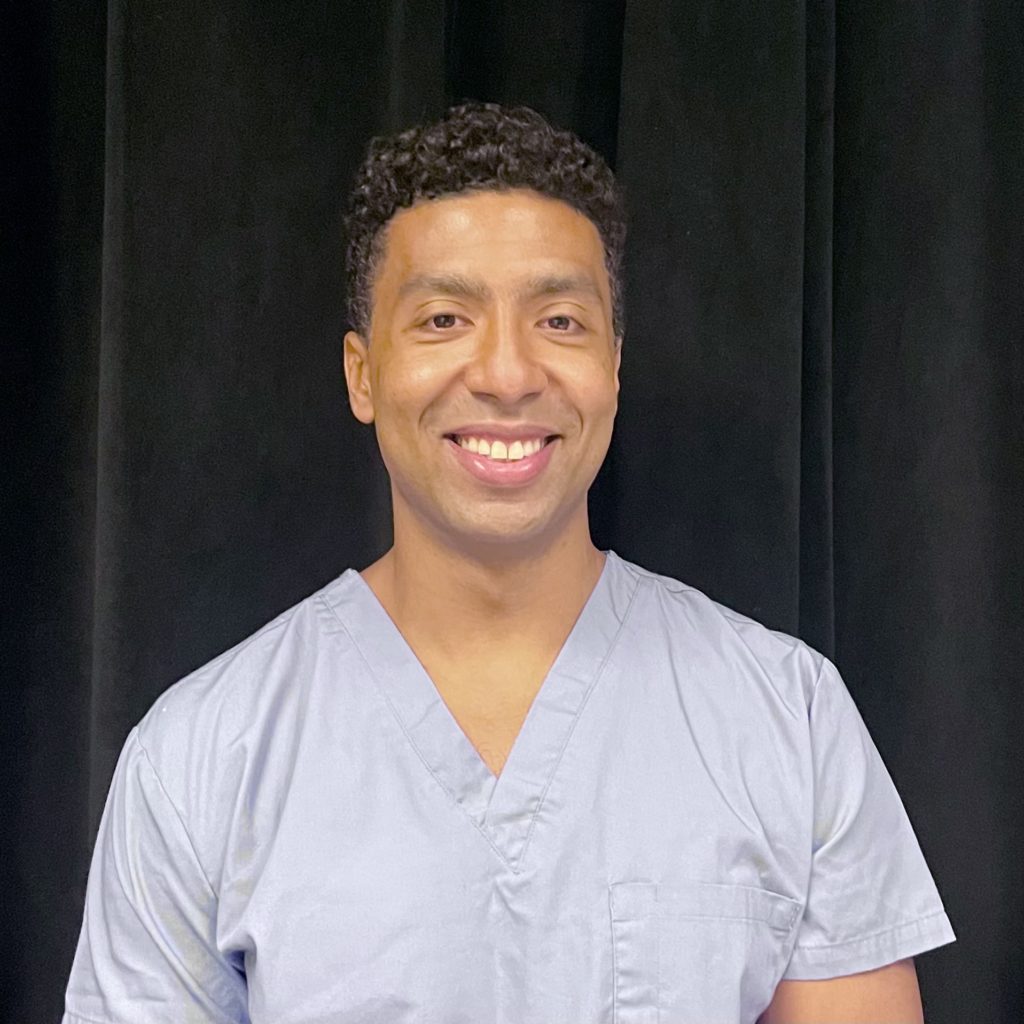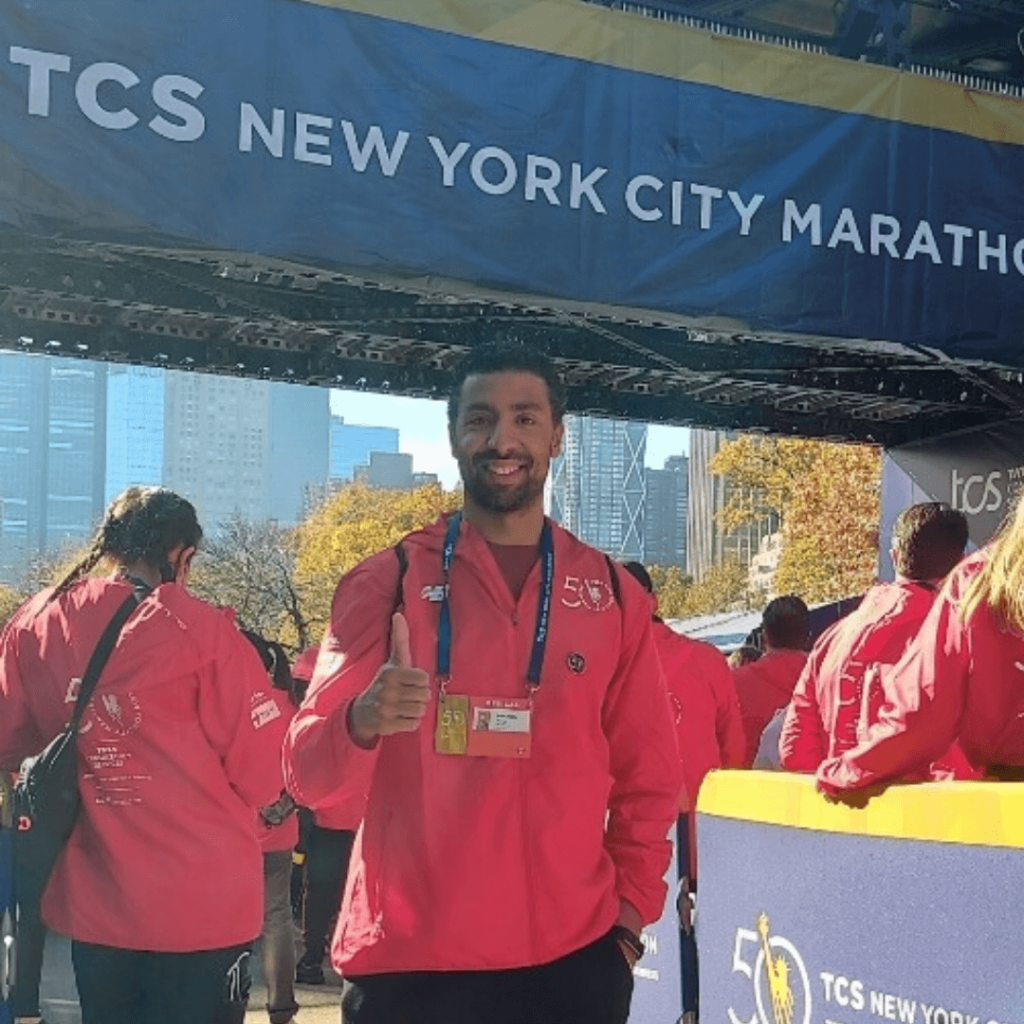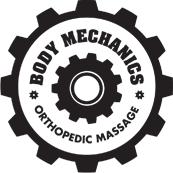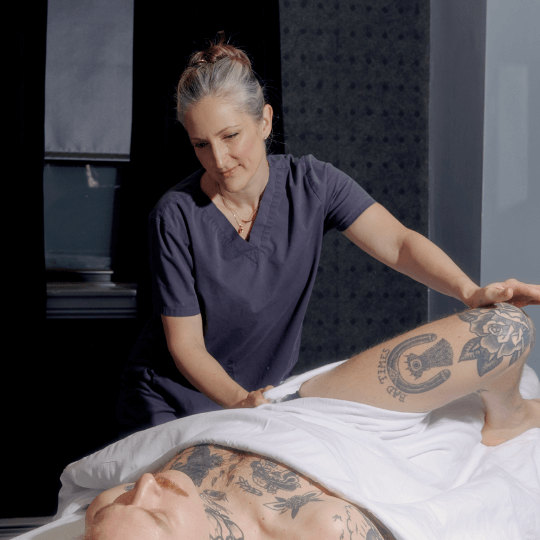Introduction to the New York City Marathon and Massage
Every year we take part in the NYC Marathon by supporting runners in their health care journeys. We see runners of all kinds, new runners, experienced marathon runners, runners with disabilities who all have one thing in common, they think massage would be a benefit to their marathon training.
This year we were lucky enough to have one of our therapists participate. Take a look at what he had to say about the experience.
The role of Massage therapists at the TCS NYC Marathon

Hello there, my name is Emanuel Gomez, and I am a Licensed Massage Therapist and a Personal Trainer. I specialize in Sports Massage. I volunteered as a medical staff member for the 50th anniversary of the NYC marathon. This was a great opportunity to work alongside other medical professionals to help runners get back on their feet after running 26.2 miles. The kind of training you must have as a Licensed Massage Therapist for this particular event is how to treat an athlete post-competition. A lot of the athletes needed to be treated for muscle cramping and/ or muscular aches after the race. My job at the event was to assess the athletes to see whether the athlete was cramping due to dehydration, which was the case for many of them or if they experienced any muscular injuries throughout the race such as a tear for example, which can be treated through massage. From there you apply the appropriate massage treatment according to their condition.
Why The Marathon Needs Volunteer Healthcare Workers

The volunteer experience was great and a bit intense since our tent was the medical tent where the more severe of cases were. The cases ranged from a mild muscle strain or cramping to complete dehydration and hypo/hyperthermia. One particular runner that we received was suffering from dehydration and hyperthermia and had a core temperature of 103 degrees. He had to be submitted to the ICU immediately.
In his case he seemed moderate upon arrival until he settled down. At first he felt cold and his legs were cramping. We gave him salt packages and Gatorade to alleviate the cramping and we provided gentle stretching and massage. But he then started to shiver aggressively. Our team applied heavy blankets on him and provided him with soup but he still wasn’t warming up. Our Captain Physician decided to take his rectal temperature and read 103. A more extreme treatment approach was needed. He was sent to the ICU where we monitored his heart rate and blood pressure. We applied ice packs to his axillary areas and groin to bring down his core temperature. An IV was inserted into his arm to continue to rehydrate him and eventually he recovered. This case was one of the more severe ones that we encountered.
However, not all cases were like this. Depending on the degree of the runner’s condition we provided the appropriate treatment. If it’s muscle cramping or a strain, then that’s when LMT and PT get involved. We made sure we ran down a check list of conditions to an incoming subject to get a picture of what treatment the runner will receive. LMTs and PTs were amongst the busiest since we had to deal with the mildest of cases like muscle cramping and strains which were the more common of complaints.
Summing Up the Massage Therapist Role in the Marathon
After such a demanding event like the marathon, I recommend a post-event recovery massage approximately 24 to 48hrs after to mitigate DOMS (delayed onset muscle soreness) which can be debilitating especially for newer runners. I conclude by saying that this was a fantastic experience, to see all the disciplines from Physicians, to Podiatrists, to ER emergency workers, to PT and LMT to even Psychologists working together and performing their specialty in helping the athletes get better was very inspiring. Every medical staff member had a job to do in the marathon.
This experience is great for old and new therapists who would like to work in a sports environment with a team of other disciplines. If you do decide to participate as a volunteer in future marathons, prepare to be on your feet all day and moving around as you will be going from station to station helping runners. Typically, the day will be long, we are talking from 8 30 to about 6 30pm.
- May 2025
- April 2025
- March 2025
- February 2025
- January 2025
- December 2024
- November 2024
- October 2024
- September 2024
- August 2024
- July 2024
- June 2024
- April 2024
- March 2024
- February 2024
- January 2024
- November 2023
- October 2023
- September 2023
- July 2023
- April 2023
- March 2023
- January 2023
- October 2022
- June 2022
- May 2022
- March 2022
- February 2022
- January 2022
- December 2021
- November 2021
- October 2021
- September 2021
- August 2021
- July 2021
- June 2021
- May 2021
- April 2021
- March 2021
- February 2021
- January 2021
- December 2020
- November 2020
- October 2020
- September 2020
- August 2020
- June 2020
- March 2020
- February 2020
- January 2020
- November 2019
- October 2019
- September 2019
- August 2019
- June 2019
- May 2019
- April 2019
- March 2019
- October 2018
- September 2018
- June 2016
- April 2016
- February 2016
- January 2016
- September 2015
- August 2015
- July 2015
- May 2015
- April 2015
- March 2015
- January 2015
- August 2014
- July 2014
- June 2014
- April 2014
- March 2014
- February 2014
- January 2014
- December 2013
- November 2013
- September 2013
- August 2013
- anxiety
- Back Pain
- Body Mechanics
- Body Mechanics Blog
- Bursitis
- business
- Carpal Tunnel
- ceu's
- Continuing Education Credit
- COVID
- Cupping
- deep tissue
- dyi
- Foot Pain
- General
- healthcare
- insurance
- lymphatic massage
- Massage Education
- massage NYC
- massage therapy
- NYC Marathon
- Orthopedic Massage
- pain management
- pain managment
- pain science
- Plantar Fasciitis
- Plantars Fascitis
- Prenatal Massage
- preventative care
- relaxation
- rub
- Runners Massage
- running
- sleep
- Sports Massage
- stress
- Stretches
- subacute
- swedish massage
- tendons
- Therapist Profile
- TMJ Massage
- Training
- treatment techniques
- Uncategorized
- World Health Day

